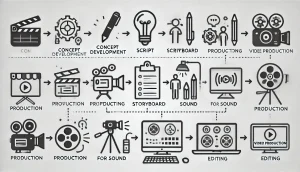Understanding the 401(k) Plan: A Comprehensive Guide
As we approach the conclusion of the financial landscape in 2023, the significance of robust retirement planning becomes increasingly clear. Leading the way in this preparation are 401(k) plans, serving as a fundamental instrument for countless Americans in shaping their retirement future.
This comprehensive guide delves into the various aspects of 401(k) plans, aiming to demystify their structure, advantages, and options. With over 60 million active plans in the United States, gaining a clear understanding of these plans is imperative for anyone looking to navigate the path to a secure retirement.
What is a 401(k) Plan?
These plans are a vital element in the retirement strategy for numerous Americans. As an employer-sponsored savings initiative, it allows employees to allocate a part of their pre-tax income to a specified retirement account.
Its main appeal is derived from its tax-efficient nature and the opportunity for employer-matching contributions. Such contributions from employers can considerably boost an individual’s retirement reserves, rendering the 401(k) plan a highly esteemed employee advantage.
Different Types of 401(k) Plans
Each 401(k) plan type offers distinct features, benefits, and tax considerations. A thorough understanding of these variations is crucial in selecting the most suitable plan that aligns with individual retirement objectives, tax circumstances, and employment status.
Safe Harbor 401(k) Plans
Adhering to strict IRS Safe Harbor 401k rules, these plans are structured to pass non-discrimination tests, ensuring equitable treatment for all employees, irrespective of their earnings level.
Safe Harbor plans mandate that employers contribute to their employees’ accounts, with these contributions being immediately vested. The contributions can either match the employees’ contributions or be non-elective, benefiting all eligible employees equally.
This plan is especially advantageous for employers looking to avoid the complex non-discrimination tests associated with conventional 401(k) plans, ensuring that high-earning employees can contribute maximally without being limited by the saving rates of lower-earning staff.
Roth 401(k) Plans
These plans enable contributions using after-tax income. A significant benefit is the ability to withdraw both the contributions and the earnings tax-free during retirement, given specific criteria are met, such as being over 59.5 years old and holding the account for at least five years. This plan is beneficial for those anticipating a higher tax bracket upon retirement, allowing them to pay taxes at their current, likely lower, rate.
Solo 401(k) Plans
Tailored for self-employed individuals without any employees other than a spouse, solo 401(k) plans feature higher contribution limits. Plan participants can contribute in dual roles, both as an employer and an employee, optimizing their retirement savings and gaining considerable tax benefits. This kind of plan is particularly advantageous for entrepreneurs and freelancers aiming to accumulate substantial retirement funds, offering them flexibility in contributions and attractive tax incentives.
Common Questions Regarding 401(k) Plans
How Much Can Employees Contribute to Their 401(k)?
The IRS sets annual contribution limits for 401(k) plans, adjusted periodically for inflation. Employees aged 50 and over have provisions for additional ‘catch-up’ contributions.
What Investment Choices are Available in 401(k) Plans?
401(k) plans typically offer a range of investment options, including mutual funds investing in stocks, bonds, and other assets. Some plans also offer target-date funds, which adjust the asset mix as retirement approaches.
What are the Tax Benefits of 401(k) Plans?
401(k) plans offer tax advantages: traditional contributions reduce taxable income, deferring taxes until withdrawal. However, taxes are not eliminated but deferred to the future.
Can You Take Loans or Withdrawals from a 401(k) Plan?
Most 401(k) plans have provisions for loans and hardship withdrawals, but these can significantly impact retirement savings and tax situations. This means understanding the rules and implications is crucial.
How Does Employer Matching Work in 401(k) Plans?
Employer matching in 401(k) plans is a significant benefit, effectively adding free money to retirement savings. However, it often comes with conditions like vesting schedules.
Why Should You Monitor and Adjust 401(k) Investments?
Actively managing your 401(k) entails routinely examining and adjusting your portfolio to ensure it aligns with your retirement objectives, risk appetite, and prevailing market circumstances. It is also crucial to modify your investment approach as you approach retirement.
What are Common Mistakes?
Common mistakes include not contributing enough to get the full employer match, investing too conservatively or aggressively, or not adjusting the investment strategy over time. Proactive management and staying informed can help avoid these pitfalls.
Conclusion
401(k) plans are a vital component of retirement planning, offering tax advantages, employer contributions, and investment flexibility. Understanding the intricacies of your 401(k) plan is essential to maximize its benefits and ensure a more secure and comfortable retirement.








